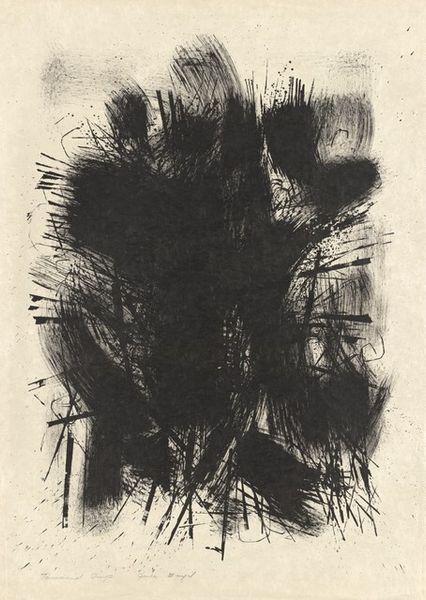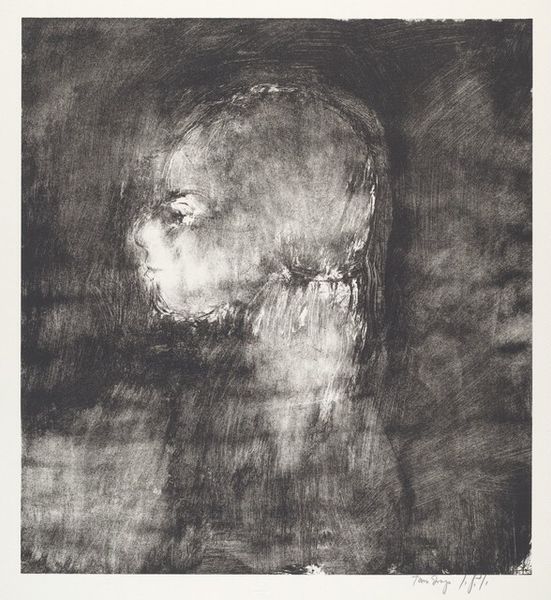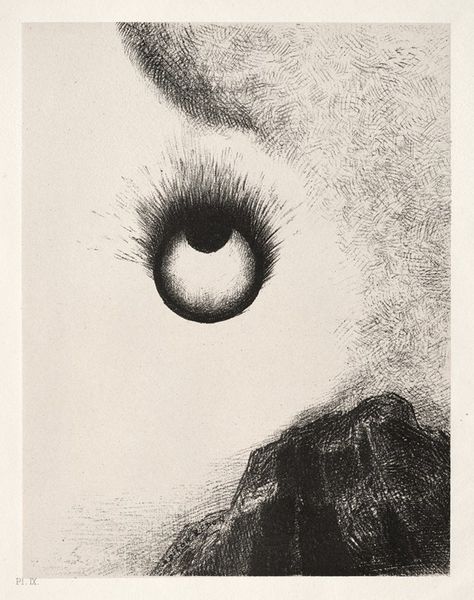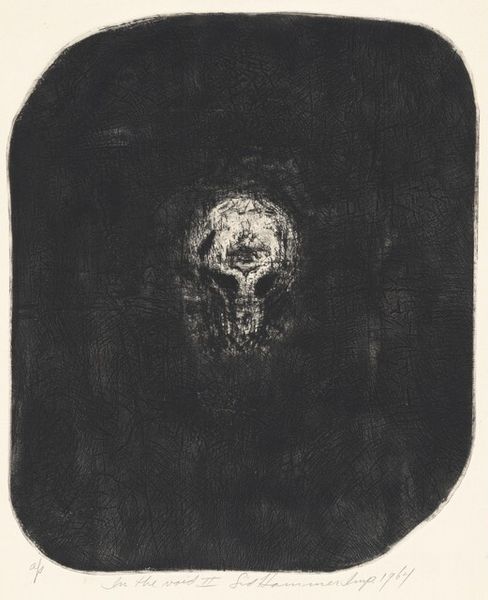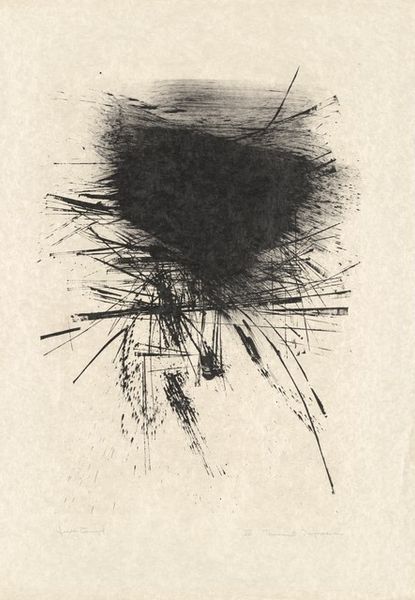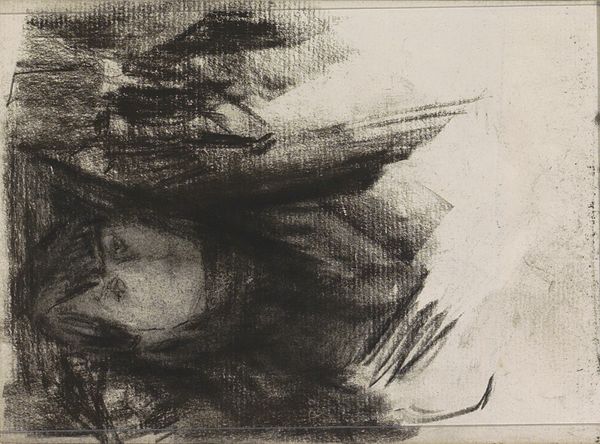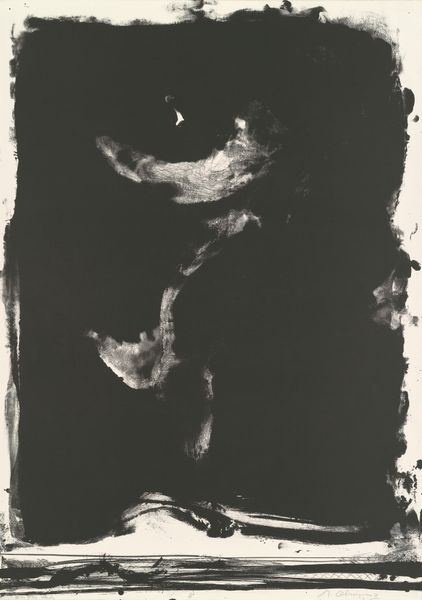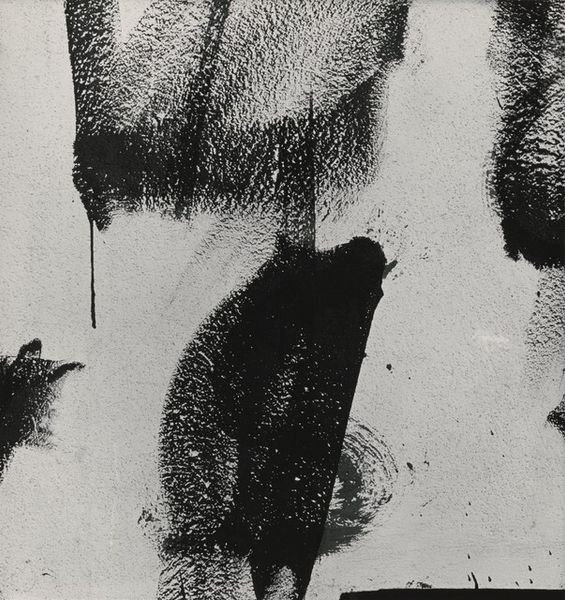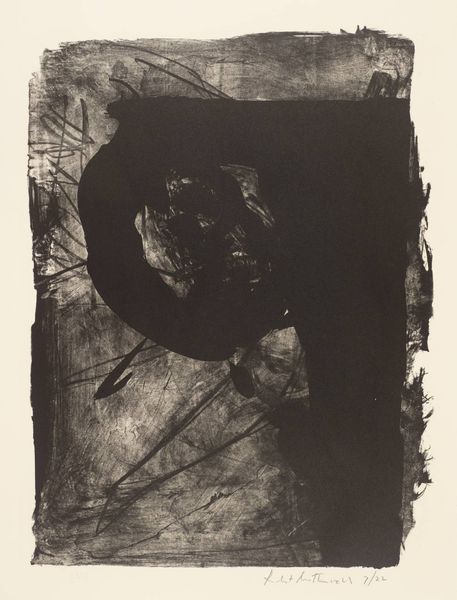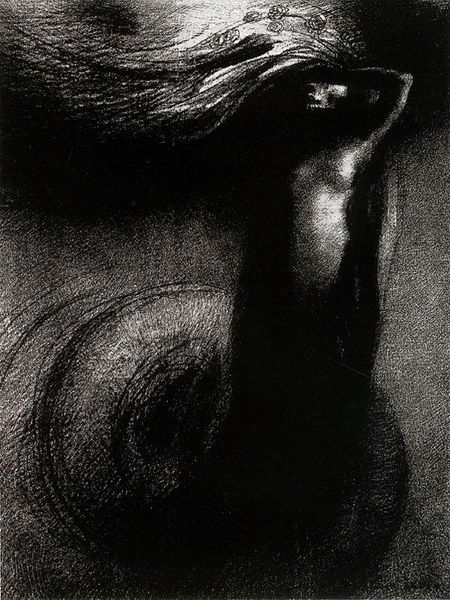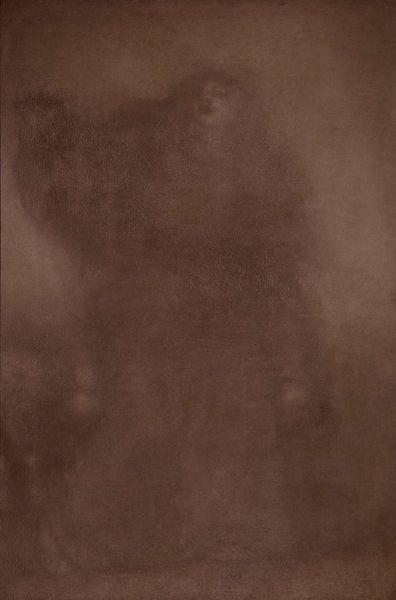
Copyright: Public domain
Editor: This is "Planet," a charcoal and graphite drawing by Victor Hugo from 1866. It has a rather melancholic mood, like looking into a void. The strong contrast of dark and light makes it visually striking. What do you see in this piece? Curator: Immediately, the interplay of light and shadow grabs me. It is not just a celestial body; it is a wellspring of potent symbolism. Notice the vortex-like effect created by the charcoal. It speaks to the romantic notion of the sublime, but also a journey into the unconscious, echoing alchemical symbols, the *prima materia* perhaps. Do you sense any Jungian archetypes at play? Editor: I hadn’t thought of it that way. I was stuck on the darkness being negative, but now, thinking about alchemy and the unconscious, it feels more transformative. Is the single bright spot within the darkness intentional? Curator: Undoubtedly. Consider it as a focal point—a glimmer of hope or consciousness, maybe even divine spark, within the abyss. Victor Hugo often dealt with duality; here he represents an individual consciousness against an uncaring, vast universe. It brings to mind ancient traditions of underworld journeys, a sort of *katabasis* into the self. The symbol of light within the dark appears across multiple cultures and centuries; it's hard to ignore its persistent presence. Editor: I see what you mean about duality now. Before, it just felt like a dark drawing, but with the light, and thinking about the journey, it has more complexity. Curator: Precisely. We started with a simple planet but ended up contemplating journeys of transformation, which is the true magic of art isn't it?
Comments
No comments
Be the first to comment and join the conversation on the ultimate creative platform.
